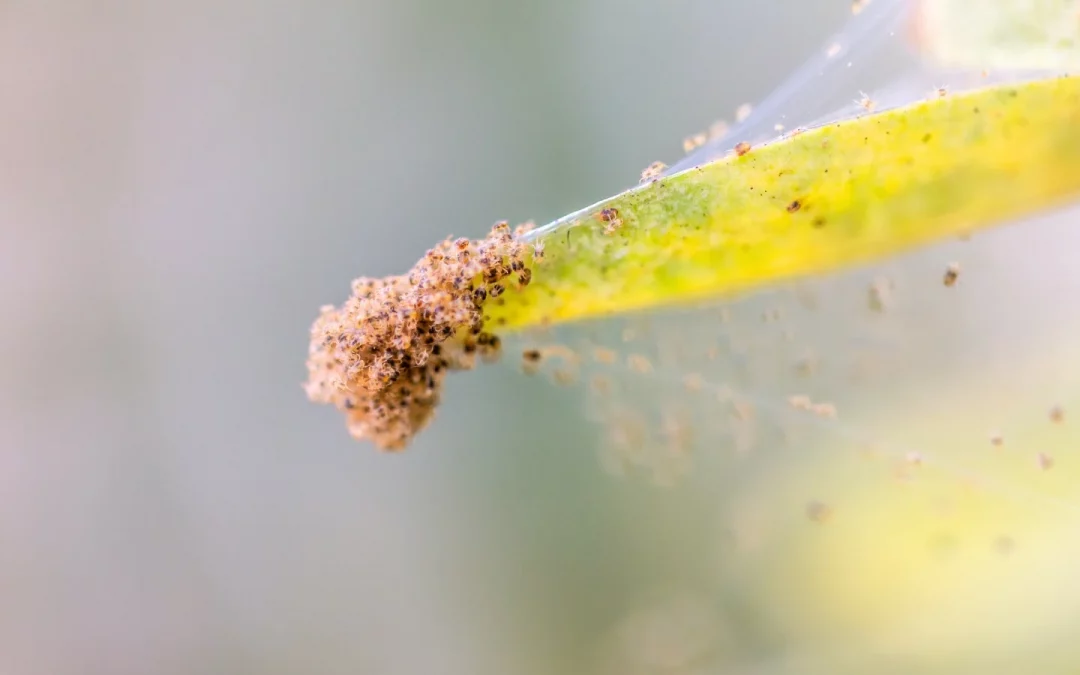Contents
- 1 How to Spot and Treat Spider Mites on Indoor Plants Naturally
- 2 What Are Spider Mites?
- 3 Signs of Spider Mites on Indoor Plants
- 4 Causes of Spider Mite Infestations
- 5 Natural Ways to Treat Spider Mites
- 6 How to Prevent Spider Mites Indoors
- 7 FAQs About Spider Mites
- 8 Final Thoughts on Spider Mites
- 9 Related Articles
How to Spot and Treat Spider Mites on Indoor Plants Naturally
Spider mites are tiny pests that can wreak havoc on your indoor plants if left unchecked. They feed on plant sap, weakening leaves and stunting growth. The worst part? They multiply quickly, making early detection and natural treatment essential. In this guide, we’ll show you how to identify spider mites, treat them without harsh chemicals, and prevent future infestations.
What Are Spider Mites?
Spider mites are microscopic arachnids, related to spiders and ticks. They’re hard to see with the naked eye, but their damage is noticeable. The most common type is the two-spotted spider mite, which thrives in dry, warm conditions.
Signs of Spider Mites on Indoor Plants
Since spider mites are tiny, you’ll often notice symptoms before spotting the pests:
Fine webbing on leaves and stems (resembles spider silk)
Speckled or stippled leaves with yellow or brown dots
Leaf curling or distortion
Dry, brittle leaves that fall prematurely
Tip: Use a magnifying glass or tap a leaf over white paper—tiny moving specks may be spider mites.
Causes of Spider Mite Infestations
Spider mites thrive in certain indoor conditions:
Dry air (low humidity)
Overly warm rooms
Stressed plants (due to poor watering or weak soil)
Lack of airflow around plants
Natural Ways to Treat Spider Mites
You don’t need harsh pesticides to fight spider mites—natural methods can work just as well.
1. Neem Oil Spray
Mix 2 teaspoons neem oil with 1 liter of water and a few drops of mild soap.
Spray thoroughly on leaves (top and underside). Try this organic neem oil for plants on Amazon.
2. Insecticidal Soap
Mix 1–2 teaspoons of mild liquid soap in 1 liter of water.
Spray affected areas every few days until mites are gone.
3. Rubbing Alcohol Solution
Dilute 1 part rubbing alcohol with 3 parts water.
Wipe leaves gently to kill mites on contact.
4. Increase Humidity
Spider mites hate moisture.
Mist plants lightly or use a humidifier nearby.
This compact plant humidifier helps maintain humidity and discourages pests.
5. Prune Heavily Infested Leaves
Remove and dispose of damaged leaves.
Always sterilize scissors before and after use.
How to Prevent Spider Mites Indoors
Keep humidity high for tropical plants.
Wipe leaves regularly to remove dust.
Isolate new plants for 1–2 weeks before placing them with others.
Avoid over-fertilizing, as it can encourage soft, mite-friendly growth.
Inspect plants weekly to catch infestations early.
FAQs About Spider Mites
Q: Are spider mites harmful to humans?
A: No, spider mites don’t bite humans or pets. They only damage plants.
Q: How long does it take to get rid of spider mites?
A: With consistent natural treatments, you can usually eliminate them within 2–4 weeks.
Q: Can spider mites spread to all my indoor plants?
A: Yes, spider mites move quickly between plants. That’s why isolation and early treatment are important.
Final Thoughts on Spider Mites
Spider mites may be tiny, but the damage they cause to indoor plants is anything but small. Luckily, natural remedies like neem oil, insecticidal soap, and increased humidity can stop them in their tracks. Prevention is key—keep your plants clean, humid, and regularly inspected to avoid recurring infestations. With proper care, your plants will bounce back stronger and healthier.
Learn more about common indoor plant pests from the RHS guide on houseplant pests.

